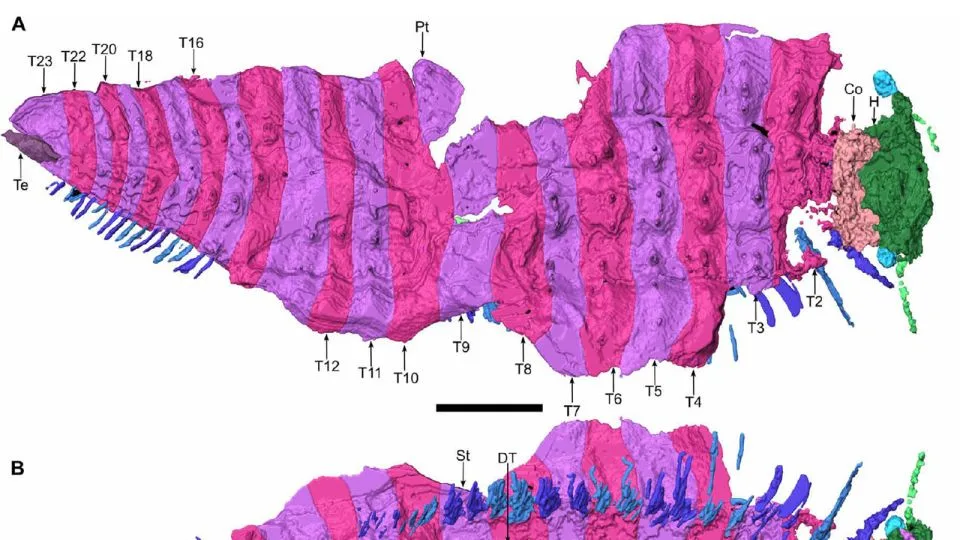Scientists have discovered fossils of a giant arthropod called Arthropleura that lived around 300 million years ago in what is now Europe and North America. It was the largest known arthropod ever, reaching up to 8.5 feet long.

While fossils of Arthropleura had been found before, none included its head, leaving questions about what it looked like and how it lived.
New research analyzed fossils from 2 juvenile Arthropleura specimens found in France. MicroCT and synchrotron scans revealed details of the fossils, including the first complete Arthropleura head.

The head showed a mosaic of features. It had stalked eyes like crustaceans, and a feeding apparatus similar to centipedes. But its body organization was like millipedes. This suggests millipedes and centipedes are more closely related than thought.
Arthropleura’s large size was likely due to high oxygen levels at the time, which allowed arthropods and insects to grow very large, some the size of alligators.

Questions remain about Arthropleura’s diet, breathing system, and whether it was terrestrial or possibly amphibious. Finding more complete fossils could provide more insights.
Source: CNN









